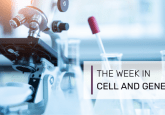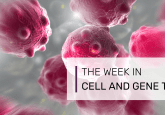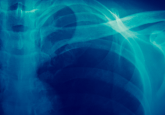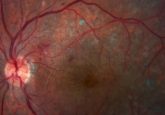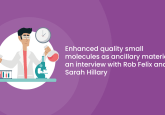Advancing towards a universal platform for iPSC-based therapies: an interview with Boris Greber and Thomas Marx
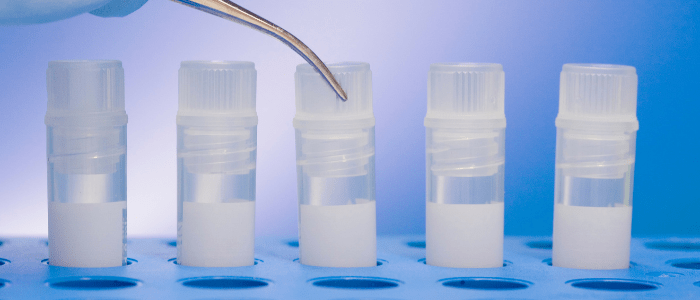
In this interview, we spoke with Boris Greber and Thomas Marx, who are both from RheinCell Therapeutics (Langenfeld, Germany), now part of Catalent Cell & Gene Therapy (Dusseldorf, Germany), about using induced pluripotent stem cells (iPSCs) as starting materials for cellular therapies, including the concept behind a universal platform for iPSC-based therapies.
Greber has been with RheinCell Therapeutics since 2018 and has supervised the scientific and hiPSC production activities at the company. He has 15 years of experience working with iPSCs in both basic and applied research. Marx joined RheinCell Therapeutics 1 year after Boris to head up commercial activities, including business development and partner management. Before this, he worked for over two decades in various leadership roles at vendors for products, technologies and services for the development and commercialization of biopharmaceutical products and vaccines.
This interview is part of the RegMedNet In Focus on cellular starting materials for cell therapies. Discover expert opinions on this, including features of iPSCs as starting materials, now.
Visit the feature
Why should iPSCs be used as starting materials for regenerative medicine? What advantages do they bring for patients, clinicians and therapy developers over other alternatives?
Boris Greber (BG): There are three key features of iPSCs that underlie the advantages they offer users, from developers to clinicians and patients. First, they are basically immortal. That means that iPSCs can be expanded indefinitely over passages and a working cell bank can be expanded from a master cell bank without loss of performance.
Second, iPSCs can be cryopreserved and recovered very easily, which facilitates their handling compared to other cell types. They are also easily manipulated. Procedures have been established over the last years to generate clonal lines with targeted genetic modifications using, for example, CRISPR–Cas9 technology.
Finally, in principle, iPSCs can be differentiated into every tissue of the human body, making them an ideal universal cell source for therapies addressing a range of indications in the future.
Thomas Marx (TM): From a developer’s perspective, the features Boris described allow growing up large quantities of cells in a short amount of time and starting from a thoroughly characterized clonal line. That growth potential underscores their suitability for differentiation into tissues and gives developers a lot of flexibility to upscale processes compared to other cells that run into senescence after a couple of passages.
For patients and clinicians, those features imply that iPSCs can be distributed globally with proportionally little effort related to logistics and logistics qualification. Why shouldn’t a single cell line, fully qualified, documented and produced within a regulatory framework, act as a universal starting source for numerous therapeutic centers?
You’ve talked about a universal platform for iPSC-based therapies. Could you describe that concept in more detail and the therapeutic strategies it enables?
BG: I alluded to this universal concept in describing the pluripotency of iPSCs. They can be used for a broad range of indications through differentiation into cardiomyocytes, beta cells, NK cells or specific types of neurons.
Yet another aspect that justifies our use of the term ‘universal platform’ is our specific approach in working with HLA-homozygous donors. HLA genes are relevant for tissue recognition by the immune system. Homozygous donors have the same variants of the HLA genes on both maternal and paternal chromosomes.
Focusing on their donated material, we generate corresponding HLA-homozygous iPSCs that are particularly well-suited for addressing immune compatibility. This concept implies that with a limited number of HLA-homozygous iPSC lines representing the most frequent HLA haplotypes in a population, we can establish immune compatibility for a large fraction of that population. Contrary to autologous cell therapies where a patient-derived cell line is used to treat the same patient, these iPSC lines are off-the-shelf stocks to treat millions of patients.
What are the challenges of establishing iPSCs as starting materials for clinically relevant therapeutic development?
TM: Consistent and predictable outcomes are a prerequisite to translate a manufacturing process to a clinical setting. Everything must be standardized and reliable, from sourcing to manufacturing, from analytics and quality control assays to cryopreservation, logistics and more. At this point, a full GMP workflow is established for several indications. But the field is developing with increased focus and attention from regulatory agencies aiming to provide a framework that allows generating safe products. Look at some of the requirement differences between the US FDA and EMA, for example, related to donors. There is an obvious need of alignment to facilitate a commercially feasible launch of a new therapy for global markets.
BG: Several of the methods to handle, expand and manipulate the cells while preserving genomic integrity were optimized over the last years. Culturing systems with chemically defined media were established. Protocols to generate iPSCs without traces of vectors or other transgenic material were devised. Procedures to differentiate the cells into tissues with high efficiency and specificity were created.
The processes that Thomas described, however, came as a second step. Technically, I would say that it is now easy to generate iPSCs. But the whole regulatory framework to produce these cells is certainly still a challenge. Not only setting up the processes under cleanroom-compatible conditions and getting all the paperwork in place, but also developing everything around it – donor eligibility, re-consent for commercial use of donated material, standardized procedures, analytics – and embedding it in a quality management system that meets international GMP guidelines.
Why is cord blood a good source for cells to be induced into pluripotency? What are the biological, logistical and commercial advantages?
BG: Indeed, cord blood is an advantageous starting source for different reasons. One is certainly the biology. As a neonatal source, the cells are likely to have a low load of somatic mutations compared to adult-sourced cells.
From a regulatory perspective, our cord blood units are a GMP material, certified as clinical products for the treatment of, for example, leukemia in children. Thus, sourcing cord blood establishes an uninterrupted chain of GMP processes from start to finish. Finally, specifically related to our work with HLA-homozygous donors, we can pre-screen the large collections at cord blood banks for HLA-homozygosity and other parameters, like blood groups, and cherry pick the best-suited starting points.
You highlighted the importance of starting materials as a catalyst for the commercial feasibility and economic practicality of cell therapies. What does that look like?
TM: We have a library of cell lines in place that developers can evaluate and pick the best line for their process. In fact, we ship out evaluation material that is not GMP-grade but derived from the same cell lines we have under GMP. Being able to evaluate several cell lines at low cost and pick an appropriate line is economically very attractive. It saves money, time and resources during the development of a new cell therapy.
BG: In a way, our iPSCs allow you to pause the manufacturing process. We start from a donor to generate and thoroughly characterize iPSCs. These cells mark that pause point. We then multiply the stocks and distribute them to customers and partners, potentially throughout the world. Those partners can then start from that intermediate stage of the process and focus just on differentiation and generating the therapeutic tissue at their facilities. They no longer have to bother anymore with creating the starting material. This new supply chain catalyzes therapeutic development by offering a sort of ‘short cut’ to developers.
Lastly, how do you see the field progressing in 5–10 years from now in terms of the use of iPSCs as starting materials?
BG: I’m certain that iPSCs have a bright future in the 21st Century as the basis for novel cell therapies, from cell replacement therapies to treatments for cancers, to helping many people instead of individual patients. The key term here is ‘off-the-shelf’ products. Companies like RheinCell Therapeutics, now part of Catalent, will manufacture tissues to be used directly or cryopreserved for ‘off-the-shelf’ use later. With their enormous potential to differentiate into virtually any cell type, even those for which we currently have not sourced, iPSCs could revolutionize medicine, especially for indications where time for treatment is limited.
TM: To make cell therapies a successful new medical field, it is important that the treatments are affordable for healthcare systems. Today’s autologous approaches are simply too expensive. As Boris mentioned, iPSC-based therapies could open a new road to success where allogeneic strategies circumvent cost and logistics hurdles. In terms of the market, it is realistic to assume that the now short list of companies able to supply GMP-grade iPSCs will expand. Yet, it is impossible for any single company to cover all indications and so, we will see dispersion and specialization. We already see many biotech and startup companies active in the field, and increasingly large pharmaceutical companies are engaging with the technology to fuel existing development pipelines with promising new approaches. Developers will focus on interesting indications and RheinCell Therapeutics, now part of Catalent, aims to provide the materials we think are key to success.
Disclaimer
The opinions expressed in this interview are those of the interviewees and do not necessarily reflect the views of RegMedNet or Future Science Group.

